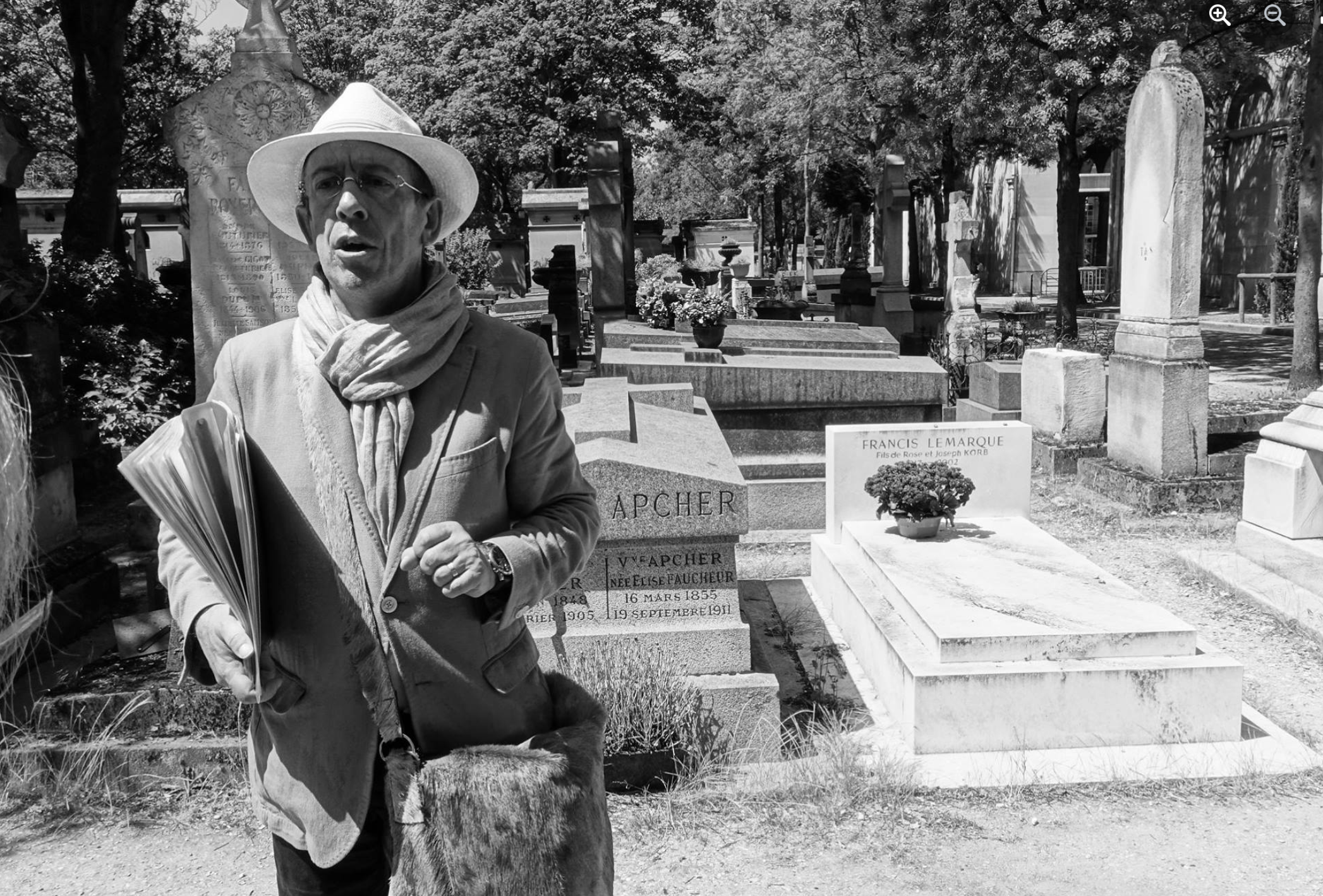Steaming coffee in hand, I’m admiring Le Radeau de la Méduse – the Raft of the Medusa – on a crisp morning in Paris. But I’m not at the Louvre, or any of the (many) galleries and museums. Instead, I’m standing by the grave of Théodore Géricault.
His famous oil painting has been sculpted in bronze to one side of his gravestone at the most-visited cemetery in the world: Père Lachaise. Here, spread across this 110-acre city of immortals, Gericault joins Edith Piaf, Jim Morrison, Amedeo Modigliani and Oscar Wilde amongst an estimated one million others.
“Père Lachaise is more than a cemetery – it’s an archive of Paris,” says Anthony Schmitt, Parisian and head concierge at the Shangri-La Paris hotel. “It has preserved the city’s history through the graves of its greatest minds, moments of struggle and artistry of the tombs. It’s a place of cultural significance for Parisians.”
The story of how history’s good and great secured a plot at this illustrious resting place is quite the yarn. Traditionally, there have been just two requirements for potential residents: that they were a citizen of Paris, or that they died here. In actual fact, anyone can rest for eternity in these non-denominational grounds. In the 21st century, however, your chance of winning a place among them is greatly reduced due to the limited space and long waiting time for burial plots.
This wasn’t always the case, however.
Read more: The best boutique hotels in Paris
“Until 1785, burial grounds were in the city centre,” says Alberto Rigettini, who has been leading English-speaking tours at Père Lachaise since 2010. “The main cemetery of Paris was Le Cimetière des Innocents, which is now the site of the Centre Pompidou.
“Paris had mass graves of rotting corpses that had been there for more than ten centuries, causing health issues for residents,” he continues. “So they had to be closed down. The remains of the people buried there were transferred 64ft underground into quarries, now known as the Catacombs.
“Napoleon decided to open new cemeteries outside the city limits: one in the north in Montmartre, one in the south in Montparnasse, one in the west in Passy, and one in the east – the Père Lachaise,” he adds.
Père Lachaise gets its name from Father François de La Chaise, King Louis XIV’s confessor, who lived on the site. It was then called Mont-Louis after the king reportedly visited the area during times of unrest in Paris.
“It was a great location,” says Rigettini. “A beautiful green hill full of trees. However, it was in the worst district for crime, poverty and morality, so no one wanted to be buried there.”
When it first opened in 1804, Parisians – who were used to burying loved ones in back gardens and churchyards – considered it too far outside the city. Only 13 people were buried here in its first year.

To encourage more funerals, the authorities created a strategy. With great fanfare, the remains of poet Jean de La Fontaine and playwright Molière were moved to Père Lachaise. Then, in 1817, in another brilliant spectacle, the remains of medieval lovers Héloïse and Abélard were moved. Abélard, a 37-year-old theologian, and Héloïse, his younger pupil, fell in love in the city in 1115, resulting in “a child of dishonour”. They wed secretly but were brutally separated. Until old age, after he became a monk and she a nun, they exchanged letters of love. In death, they were reunited and buried together.
This move achieved what had, until then, seemed impossible: people clamoured to be buried at Père Lachaise. By 1830, the cemetery had 33,000 permanent plots; by 1850, it needed to be expanded a further five times.
Read more: 12 of the best things to do in Paris – from cruising down the Seine to vintage shopping in Le Marais
Today, the grave of Héloïse and Abélard remains the most visited. Another is that of songbird Edith Piaf, who was born in the nearby neighbourhood of Belleville and died in Grasse on the French Riviera in 1963. Her husband, it is alleged, drove her body to Paris overnight so her fans would believe that she died in the city. The graves of Jim Morrison, frontman of rock group The Doors, and Frédéric Chopin join them as the top five most-visited at Père Lachaise.
Among scandalous love stories and ill-fated or dignified deaths chronicled at Père Lachaise swirls yet another Parisian urban legend: if you lie down on Victor Noir’s statue, feet pointing to his boots, and kiss him on the lips or rub his crotch, you’ll be pregnant within a year. Over generations, the legend has become even stranger; touch his right foot to get pregnant and his left foot for twins.

Victor Noir was the pseudonym of Yvan Salmon, an outspoken anti-imperialist, young journalist and notorious lothario. His death in 1870, following a duel with the cousin of Napoleon III, Pierre Bonaparte, made Noir a political hero. More than 100,000 people gathered for his funeral.
For Noir’s tomb, sculptor Jules Dalou created a bronze statue of Noir as he lay dead in the street where he fell, pants partially unbuttoned and his virility emphasised.
“Looking at the sculpture today, the most worn parts are his lips, boots and crotch,” Thierry Le Roi, who has worked as a tour guide at Père Lachaise for 25 years, tells me. “I have twins, but I’ve never touched the statue. I do have friends who asked for his help and were rewarded with kids,” he smiles, cementing Noir’s reputation.
Once the Eiffel Tower and museums of this great city have been visited, break away to Paris’ 20th arrondissement for a stroll amongst the tree-lined lanes of Père Lachaise where the dead remain very much alive.
Read more: Best hotels in Paris 2025, handpicked by our experts


